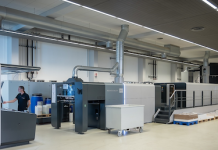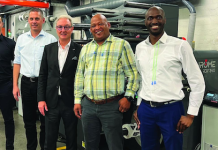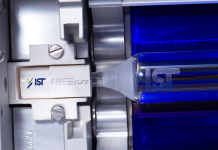Stratasys Ltd announced that worldwide mouldmaker, HASCO, has developed a rapid, cost-efficient method to producing low volumes of injection moulded prototypes by integrating Stratasys 3D printing with its K3500 quick-change mould system.
Utilising this innovative approach, moulders can quickly change between inserts for different products, enabling them to cost-effectively produce low volumes of injection molded parts for samples, prototypes and small production runs.
HASCO 3D printed the inserts in Stratasys’ ultra-tough Digital ABS material using the Objet500 Connex Multi-material 3D Production System. With a 3D printed mould insert taking only hours to produce, moulders can make design modifications to the product for a fraction of the time and cost of conventional tooling methods.
Dirk Paulmann, Executive Vice President, Sales and Business Development at HASCO said, ‘With time-to-market cycles shorter than ever and production quantities dropping, our customers are now looking for solutions that enable them to deliver prototypes quickly and cost-effectively. Compared with conventional metal or aluminium inserts, our new approach offers moulders the flexibility to quickly produce and switch inserts, making them much more productive and profitable. Combining our longstanding heritage in mould making with Stratasys’ pioneering expertise in 3D printing injection moulds, this best of both worlds technique is the future of prototype and low volume production.’
When producing a sealing plug for its industry-standard A8001 clamping fixture, HASCO identified that the walls of the ABS plastic sealing screw would need to be 12mm thick to seal the large number of threaded holes. Given this geometry, it was clear that that the screw could not be produced using the conventional injection moulding process. With the level of intricacy enabled by Stratasys PolyJet 3D printing, HASCO redesigned the screw with a reduced wall thickness and subsequently 3D printed a mould insert to the new specifications to test the integrity of the design before mass production.
‘The speed of the process was incredible,’ explained Paulmann. ‘Using our Objet500 Connex 3D Production System, we produced the parts of the cavity that shape the polymer, such as the inserts and slides in just six hours compared to the 24 hours it previously took. We then worked with prototyping specialists Canto Ing. GmbH, Lüdenscheid to finish the 3D printed inserts and test the sample mould. We were delighted with the result, the first sealing screws were produced ready for mounting on our clamping unit in a record time of only four days.
‘Through the use of tried-and-tested standardised HASCO products and Stratasys state-of-the-art 3D printing, the project has proved that it is possible to implement this innovative rapid-technology application within the injection moulding process. For the production of low-volume prototypes in the final product material, the ability to quickly change moulds with a 3D printed cavity offers a rapid, low-cost alternative to conventional methods,’ he added.
Nadav Sella, Director, Manufacturing Tools Vertical Business Unit, Stratasys, concluded, ‘We’re extremely excited about what this collaboration has done to advance the low volume injection moulding process and the resulting manufacturing efficiencies that can be achieved by molders. We view this as an application area with significant potential and will continue to work with partners such as HASCO to further extend the benefits of additive manufacturing into the world of mould making and injection moulding.’





















